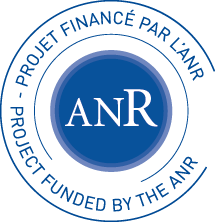Titles and Abstracts of the mini-courses
-
Andrea Davini:
Aubry Theory for systems of weakly coupled Hamilton-Jacobi equations
Abstract:
Weakly coupled systems of Hamilton-Jacobi equations have been studied in the PDE literature as a particular instance of monotone systems, More recently, they have been considered in connection with asymptotic problems (homogenization, long-time behavior of solutions, etc.), where the analysis is based on the introduction of an associated critical value and on the study of the corresponding system, settled on a closed manifold. Such a critical value is unique, while the solutions of the critical system are not unique, even up to addition of a constant vector, in analogy with what happens for a single equation. In the latter case, the study of these nonuniqueness phenomena is part of weak KAM theory. In these lectures, we will present a weak KAM analogue for weakly coupled systems of Hamilton-Jacobi equations. In particular, we will introduce an adapted notion of Aubry set and we will present its main properties. The approach is purely based on PDE techniques.
-
Vincent Humilière and Valentine Roos:
Action selectors from symplectic topology and
applications to Hamiltonian dynamics
Abstract:
Actions selectors are maps that associate to any Hamiltonian function the action of one its trajectories, in a canonical and continuous way. They form a very convenient tool that can be used in many different situations in symplectic topology and Hamiltonian dynamics, in particular when one wants to drop the convexity assumption on the Hamiltonian.
We will sketch the construction of action selectors, give their properties and present some of their applications, focusing on those presumably related to the interests of the audience. In particular, we plan to discuss symplectic capacities, symplectic homogenization, and with more details variational solutions to Hamilton-Jacobi equations and their links to viscosity solutions.
An extended program will be posted later.
Program of the Conference
(All lectures and courses and done in the main conference room)
|
|
Monday 9
|
Tuesday 10
|
Wednesday 11
|
Thrursday 12
|
Friday 13
|
|
8:50 -- 9:00
|
Opening session
|
|
|
9:00 -- 9:40
|
|
|
|
|
|
|
9:50 -- 10:30
|
|
|
|
|
|
|
10:30 -- 11:00
|
|
|
|
|
|
|
11:00 -- 11:40
|
|
|
|
|
|
|
11:50 -- 12:30
|
|
|
|
|
|
|
12:30 -- 14:00
|
lunch
|
lunch
|
lunch
|
lunch
|
lunch
|
|
14:00 -- 14:50
|
|
|
Social events
Visit of Dune of Pilat
at the Arcachon bay
Tasting oysters
Dinner
|
|
|
|
15:00 -- 15:50
|
|
|
|
|
|
16:00 -- 16:30
|
break
|
break
|
break
|
break
|
|
16:30 -- 17:10
|
|
|
|
|
|
17:20 -- 18:00
|
|
|
|
|
|
|
The dinner is at 20:00 and takes place at "La Belle Epoque", Quai Louis XVIII, 33000 Bordeaux, Tel. 05 56 79 14 58
Titles and Abstracts of the plenary lectures
-
Rodrigo Bissacot:
Universidade Sao Paulo, USP, Brasil
Stability of the Phase Diagram on Gibbs/Equilibrium Theory
We discuss the stability of the phase transition phenomenon on Gibbs/Equilibrium Theory. In particular, results for ferromagnetic Ising Models perturbed with spatially dependent external fields and also results for Equilibrium states on Countable Markov shifts.
-
Alexnadre Boritchev:
University of Lyon, France
Exponential convergence and hyperbolicity of the
minimisers for random Lagrangian systems
We consider the randomly forced Hamiton-Jacobi equation in the spirit of
Khanin, Sinai and their collaborators from the Lagrangian point of view
(long-time behaviour of the minimisers) as well as from the point of view
of the statistical behaviour of the solutions (long-time convergence
towards the stationary measure).
In both cases there is a phenomenon of exponential convergence.
A part of the presentation is about a joint work with K. Khanin
(University of Toronto).
-
Sergey Bolotin:
Moscow Steklov Mathematical Institute and University of Wisconsin-Madison, USA
Degenerate billiards in celestial mechanics
In an ordinary billiard trajectories of a Hamiltonian system are elastically reflected when colliding with a hypersurface (scatterer). If the scatterer is a submanifold of codimension more than one, then collisions are rare.
Trajectories with infinite number of collisions correspond to orbits of a lower dimensional discrete Lagrangian system. Degenerate billiards appear as limits of Hamiltonian systems of celestial mechanics in the limit of small masses. We prove the existence of solutions of such systems shadowing trajectories of degenerate billiards.
-
Piermarco Cannarsa:
University of Rome Tor Vergata, Italy
Generalized characteristics and propagation of singularities of solutions to Hamilton-Jacobi equations I: topological properties
Viscosity solutions of Hamilton-Jacobi-Bellman equations are nonsmooth functions which may fail to be differentiable on small sets. Such singularities, which play an important role for the underlying optimal control problem, have been analyzed from various viewpoints. Their dynamics can be described by generalized characteristics, which are forward solutions of the charactheristic system in Filippov's sense. In this talk, for stationary Tonelli Hamiltonians we develop an intrinsic proof of the existence of generalized characteristics using the positive Lax-Oleinik semigroup. This approach brings to light the topological structure of the singular set of a viscosity solution, which turns out to be locally path connected as shown in a recent joint work with W. Cheng and A. Fathi.
-
Wei Cheng:
Nanjing University, China
Generalized characteristics and singularitites of solutions to Hamilton-Jacobi equations, Part 2: Differential properties
This talk is based on the joint work with Piermarco Cannarsa and Albert Fathi.
It is also an extension to the talk by Piermarco.
In this part, we will talk on the propagation of singularities along the generalized
characteristics di erential inclusions. In particular, we will discuss the asymptotic
behavior of the singularities along the generalized characteristics and its connection
to the regular dynamics.
-
Xiaojun Cui:
Nanjing University, China
Viscosity solutions of eikonal equations
For a noncompact complete Riemannian manifold, we relate some topological and geometric notions to the structure of viscosity solutions of the eikonal equation. Viscosity solutions of eikonal equations for some spacetimes are also considered.
-
Eric Ossami Endo:
University of Sãao Paulo, Brazil - University of Groningen, Netherlands
Phase Transitions: the case of Inhomogeneous External Fields Ising model on Cayley Trees
Ferromagnetic Ising model has been studied since the seminal paper of E. Ising, which he proved the absence of the phase transition of the model on the lattice $\mathbb{Z}$. R. Peierls proved the existence of phase transition on the lattice $\mathbb{Z}^d$ when $d>1$, contradicting the conjecture of Ising, who conjectured that the Ising model has no phase transition for any $d\ge 1$. Adding an external field on the Ising model, T. D. Lee and C. N. Yang proved the absence of phase transition on Ising model for any $d>1$ when the external field is constant and non-zero. The papers of R. Bissacot, M. Cassandro, L. Cioletti and E. Presutti, together with the work of L. Cioletti and R. Vila, showed conditions to the spatially dependent external fields decaying to zero in order to the ferromagnetic Ising model undergoes the phase transition. On Cayley Trees in opposed to the situation on $\mathbb{Z}^d$, the phase transition on Cayley trees can appear even when the model has a non-zero homogeneous external field, this concludes that there exists the critical external fields $h_c>0$ separating the presence and the absence of the phase transition.
As the same question in the work of R. Bissacot, M. Cassandro, L. Cioletti and E. Presutti, we are going to show the condition to separate the presence and the absence of the phase transition on the spatially dependent external fields Ising model on Cayley trees when the external fields are decaying to the critical external field $h_c$. We use in the proof some dynamical systems tools, such as the stability of the plus state, which is a saddle node on the critical external field, under addition of a negative spatially dependent perturbation on the external fields.
-
Jin Feng:
University of Kansas, USA
A metric space analysis approach to a Hamilton-Jacobi equation in the space of probability measures
Hamilton-Jacobi equations in the space of probability measure is a class of very singular PDEs. We start this talk with two examples. The first one concerns a statistical mechanics application where the equation is derived by Dutch probabilists studying Gibbs-Non-Gibbs transitions. Through a method developed by the speaker and Tom Kurtz, the equation's uniqueness implies a rigorous probabilistic large deviation principle. However, this uniqueness problem is open. This model equation has a hidden spatial translation invariance. The second example concerns a variational formulation of a compressible Euler equation in the continuum mechanics. The probability measure here represents density profile of infinite particles. A particle permutation invariance is present in the model. For this second example, we have a recently developed well-posedness theory.
In the rigorous part of this talk, I focus on explaining how the well-posedness in the second example is solved. We view the space of probability measure as an infinite dimensional quotient space and use techniques based on metric analysis and the Wasserstein spaces. A key step is the use of a geometric tangent cone concept. Admissible velocity space for probability-measure valued curves is identified as the space of Markov transition kernels. This allows us to distinguish different curves with mass condensation property. A corresponding viscosity solution theory explores an identity valid in the geodesic metric spaces.
This talk is based on a joint work with Luigi Ambrosio.
-
Diogo Gomes:
KAUST Saudi Arabia
Variational inequalities and mean-field games
We consider stationary monotone mean-field games (MFGs) and study the existence of weak solutions. We introduce a regularized problem that preserves the monotonicity and prove the existence of solutions to the regularized problem. Next, using Minty's method, we establish the existence of solutions for the original MFGs. Finally, we examine the properties of these weak solutions in several examples.
-
Umberto Leone Hryniewicz:
UFRJ, Brasil and Ruhr-Universität Bochum, Germany
Linking and global surfaces of section
In this talk we explain how Schwarzman-Fried-Sullivan's
theory and Hofer-Wysocki-Zehnder's theory of pseudo-holomorphic curves
in symplectizations meet to attack the following question: When does a
collection of periodic orbits of a non-vanishing vector field (on a
3-manifold) bound a global surface of section? We provide a complete
answer to this question for Reeb flows in planar contact 3-manifolds,
extending a classical result of Birkhoff for positively curved metrics
on the two-sphere. This is joint work with Pedro Salomao and Kris
Wysocki.
-
Kei Irie:
RIMS, Kyoto Unviersity, Japan
A $C^\infty$ closing lemma for three-dimensional Reeb flows via
embedded contact homology
Embedded contact homology (ECH) is a version of Floer homology defined for
contact three-manifolds. I will explain an application of this theory to
Reeb dynamics; a proof of a $C^\infty$ closing lemma for three-dimensional
Reeb flows.
The key ingredient of the proof is a result by Cristofaro-Gardiner,
Hutchings and Ramos, which claims that the asymptotics of ECH spectral
invariants recover the volume of a contact manifold.
Applications to closed geodesics on Riemannian two-manifolds and
Hamiltonian diffeomorphisms of symplectic two-manifolds are also
presented. If time permits, I will also discuss some possible extensions
and questions.
-
Hitoshi Ishii:
Waseda University, Japon
The vanishing discount problem for fully nonlinear degenerate elliptic PDEs
I explain an approach, based on generalized Mather measures, to the vanishing discount problem for fully nonlinear, degenerate elliptic, partial differential equations. Under mild assumptions, we introduce viscosity Mather measures for such PDEs, which are natural extensions of Mather measures, originally due to J. Mather. Using the viscosity Mather measures, one can show that the whole family of solutions $v^\lambda$ of the discount problem, with the discount factor $\lambda$, converges to a solution of the ergodic problem as $\lambda$ goes to 0. An emphasis of my talk will be on the Neumann
boundary value problems. The talk is based on joint work with Hiroyoshi Mitake (Hiroshima University) and Hung V. Tran (University of Wisconsin-Madison).
-
Vadim Kaloshin:
University of Maryland, USA and ITS-ETH, Switzerland
On local Birkhoff conjecture for convex billiards
The classical Birkhoff conjecture states that the only integrable billiard is
the billiard inside an ellipse. We show that this conjecture is true for small
perturbations of ellipses preserving many rational caustics. This consists of
two main steps: study small perturbations of the circle (joint with A. Avila
and J. De Simoi) and extend the analysis to small perturbation of ellipses
(joint with A. Sorrentino). In a somewhat different direction we prove
the conjecture that for small perturbation of the circle preserving not
so many rational caustics (joint w G. Huang and A. Sorrentino).
-
Konstantin Khanin:
University of Toronto, Canada
On minimizers or random Lagrangian systems
In this talk I'll review results on global solutions
to the random Hamilton-Jacobi equation in compact setting,
and then discuss the problems and conjectures in the
non-compact case. This is an area where the dynamical and probabilistic
methods interact in an interesting and meaningful way.
I'll also discuss a connection to the problem of KPZ universality.
-
Renaud Leplaideur:
University of Bretagne Occidentale, France
Easy Ising
we give a kind of dictionary between the thermodynamic formalism for the Curie-Weiss model (mean field) in Probability and Statistical Mechanics on the one hand and Ergodic Theory on the other hand.
More precisely, we show that for the Curie-Weiss model (mean field) a Gibbs measure associated to an Hamilton of finite range converges to a convex combination of (dynamical) conformal measures associated to the potential which generates the Hamiltonian.
More suprising, we introduce a new concept of pressure (the quadratic pressure) and explain why ergodicists should maximize this quantity instead of the usal linear pressure.
-
Olivier Ley:
IRMAR - INSA de Rennes, France
Remarks for the large time behavior of solutions of Hamilton-Jacobi
equations in the unbounded case.
I will discuss some results about the large time behavior for unbounded
solutions of first-order Hamilton-Jacobi in the whole space R^n and
illustrate the additional difficulties with respect to the periodic
case on an explicit easy control problem. This is a joint work
with Thi Tuyen Nguyen (Rennes) and Thanh Viet Phan (HoChiMinh City).
-
Artur Oscar Lopes:
Instituto Matematica UFRGS, Brasil
Ergodic Transport and Ergodic Optimization
We will present several new results on Transport Theory which are related to
dynamical invariance, minimizing probabilities and Gibbs states.
-
Ezequiel Maderna:
Universidad de la Republica, Montevideo (Uruguay)
Applications of weak KAM theory to some gravitational problems
The weak KAM theory has been applied to the classicaln body problem. The main result obtained on the dynamics was the abundance of motions of the completely parabolic type. Although this is in itself interesting, we believe that the theory should give more results on the description of the dynamics of this classical problem as well as for other gravitational problems, and more particularly about their integrability or not in the classical sense (Liouville). The purpose of this talk will be to describe the state of the art in this research line.
-
Hiroyoshi Mitake:
Hiroshima university, Japan
Weak KAM theory for discount Hamilton-Jacobi equations and its application
This is a joint work with Kohei Soga (Keio university).
Weak KAM theory for discount Hamilton-Jacobi equations and corresponding discount Lagrangian/Hamiltonian dynamics is developed. Then it is applied to error estimates for viscosity solutions in the vanishing discount process. The main feature is to introduce and investigate the family of $\alpha$-limit points of minimizing curves, with some details in terms of minimizing measures. In error estimates, the family of $\alpha$-limit points is effectively exploited with properties of the corresponding dynamical systems.
-
Yong-Geun Oh:
IBS Center for Geometry and Physics & POSTECH, Korea
Topological extension of Calabi invariants and Lagrangian Floer theory
In this talk, I will explain how one could employ the analytic machinery
of Lagrangian
Floer homology in study of continous Hamiltonian dynamics,
expecially towards a topological extension of Calabi invariants
and the application to the simpleness question of the area-preserving
homeomorphism group of the 2-disc.
-
Antonio Siconolfi:
Universita di Roma La Sapienza, Italy
Hamilton--Jacobi equations on networks
We propose a new methodology to study Hamilton--Jacobi equations on
networks immersed in an Euclidean space or possibly a manifold. The
key feature is to combine it with a discrete functional equation
on the vertices of an underlying finite graph.
The discrete equation can be advantageously handled through simple
combinatorial techniques, and the outputs are thereafter transferred
to the continuous problem. This allows obtaining comparison results
without using the usual double variable method, to write down
representation formulae, and establish regularity properties.
We apply this approach to Eikonal and discounted equations, the
latter also in the nonconvex case. We formulate an adapted version
of Weak KAM theory, and study the asymptotic behavior of the
solutions to the discounted problem as the discount factor goes to
$0$.
Research in collaboration with Alfonso Sorrentino.
-
Stefan Suhr:
University of Hambourg, Germany
Optimal transportation for Lorentzian manifolds
This talk will give a short introduction to optimal transportation in the context of Lorentzian geometry.
Results include existence of minimal couplings, a sharp criterion for the existence of finite couplings,
an intermediate regularity theorem and a solution to the Monge problem.
-
Claude Viterbo:
ENS Paris, Université de Paris-Sud, Orsay, France
-
Maxime Zavidovique:
IMJ-PRG (Paris 6), France
Dynamical aspects of weekly coupled systems of Hamilton-Jacobi equations
We will present representation formulas for solutions of degenerate weakly coupled systems of Hamilton-Jacobi equations.
They generalize the Lax-Oleinik formula for a single Hamilton-Jacobi equation.
We will also review some results on how those formulas allow to give dynamical characterizations of Aubry sets.
The first part is based on results obtained with Andrea Davini and Antonio Siconolfi.
-
:




